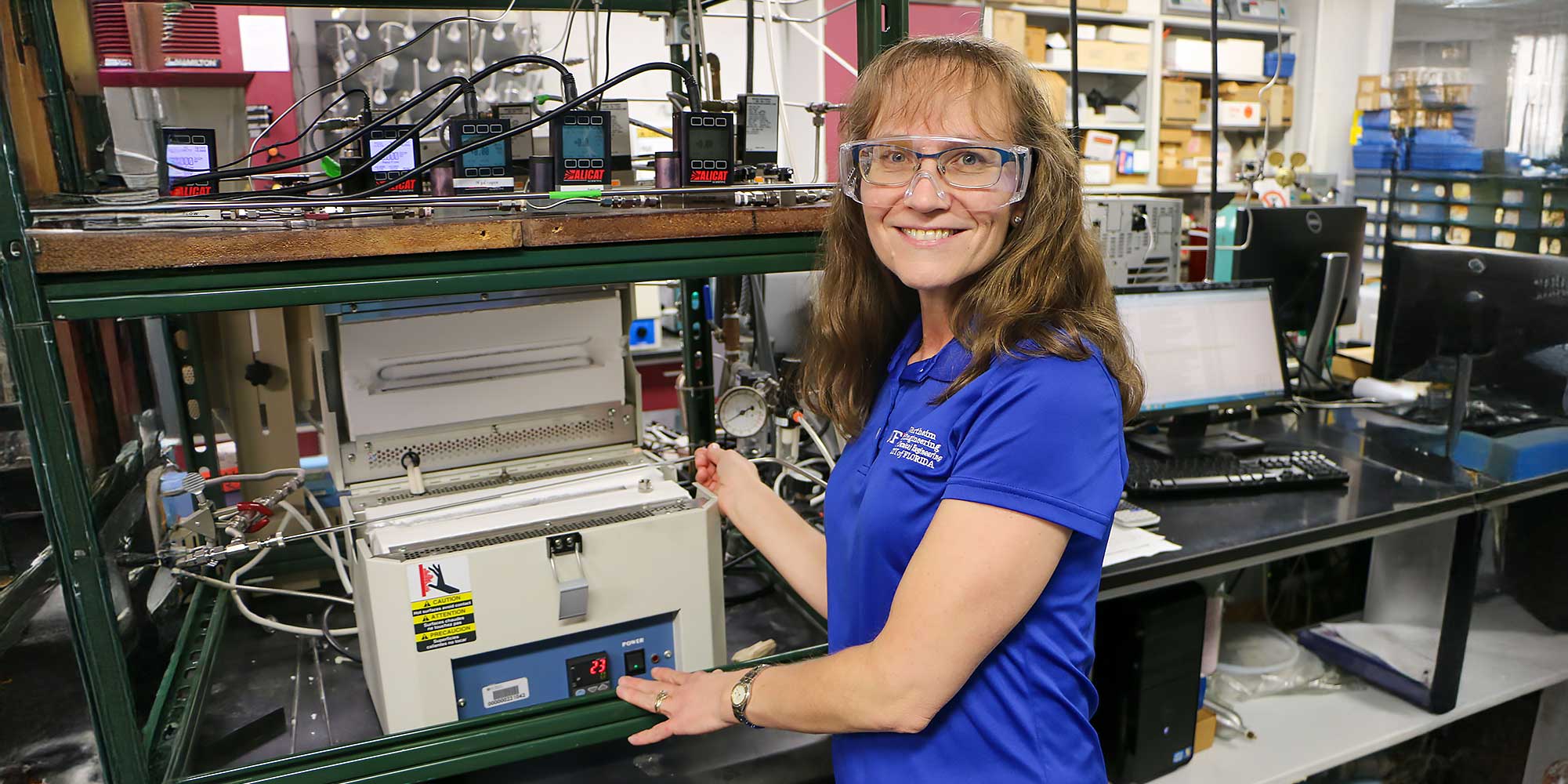Methane is the main component of natural gas and a potent greenhouse gas. What if this critical raw material could be converted into useful energy and valuable products more efficiently?
The environmental implications could be significant. If a catalyst could enable more efficient combustion of methane or more efficient conversion of methane to carbon dioxide (methane is a more potent greenhouse gas than carbon dioxide), the amount of harmful greenhouse gases released into the atmosphere could be greatly reduced.
Helena Hagelin Weaver, Ph.D., associate professor at the University of Florida’s Department of Chemical Engineering, is working to significantly improve that methane conversion. In a paper recently published in ACS Catalysis, Hagelin Weaver finds that a deeper understanding of the structure of the catalysts used in methane oxidation can lead to markedly improved performance.
Her research is focused on designing new and improved catalysts that can convert methane at lower temperatures, making these processes more energy efficient and improving their economic viability. The work shows promise in making industrial processes with methane more effective and efficient.
Low-temperature methane oxidation is important for two main reasons: environmental control and chemical production. It helps control potent greenhouse gas emissions from sources like natural gas vehicles and power plants by converting unburnt methane into less harmful products at lower temperatures, which extends catalyst life. Additionally, it’s a promising method to convert methane into valuable chemicals like methanol, offering an alternative to traditional methods that rely on crude oil.
Conversion of methane to other useful chemicals or products in an industrial setting always involves a catalyst — a material that increases chemical reaction rates without undergoing any kind of permanent change. For Hagelin Weaver, the question is: what properties influence the activity of methane combustion over these catalysts, and by extension, how can those properties be manipulated to create better catalysts?
A catalyst typically functions with a support material, a kind of carrier to which the catalyst is affixed. In the case of Hagelin Weaver’s research, the catalyst for methane oxidation is iridium dioxide — better known as IrO2 — and the support material is titanium dioxide, TiO₂. This is also a catalyst combination used in electrocatalysts for splitting water into hydrogen and oxygen.
Her research reveals how the structure, not just the composition, of a catalyst support significantly influences the catalytically active component.
To determine the influence of the structure on the performance of the catalyst, researchers used a combination of tools, including X-ray diffraction and X-ray photoelectron spectroscopy, to characterize the nanostructures supporting the catalyst.
To be clear, this stuff is small. The TiO2 nanoparticles that support the IrO2 are nanocrystals, not perfectly spherical, but rounded nanoparticles. They have average diameters ranging from 5 to 50 nm. For reference, a human hair is approximately 80,000–100,000 nanometers wide.
The research revealed that in order to design the catalyst to perform more efficiently, researchers would need to synthesize oxide supports with a specific structure to ensure that the catalysts on these supports are not only highly active but also stable during reaction.
Ultimately, Hagelin Weaver’s goal is to achieve atomic-level control over the design of oxide-supported solid catalysts, identify key interactions that govern the reactivity and use this knowledge to develop catalysts that are more active and selective. By linking atomic-scale structure to catalytic performance in methane oxidation, the research provides new insights and design principles that can be applied to develop more efficient and economically viable catalysts for natural gas conversion and related processes.

